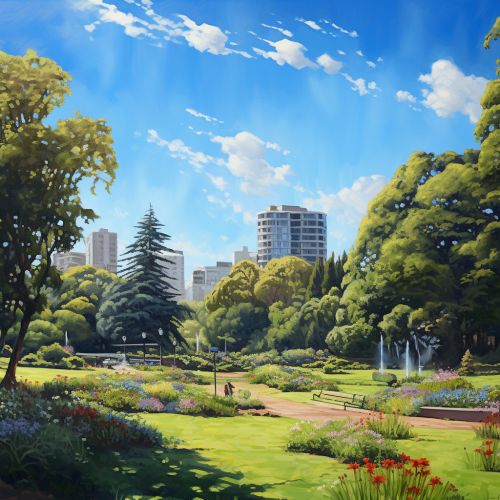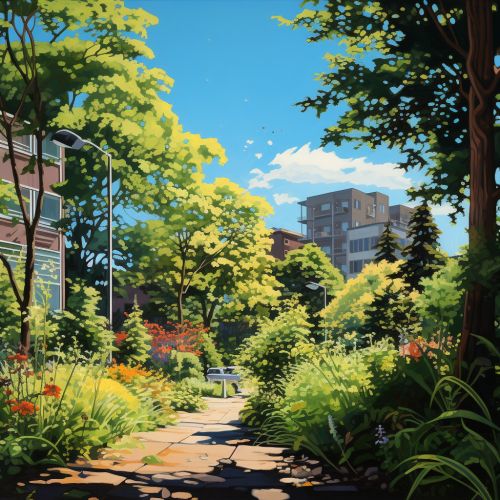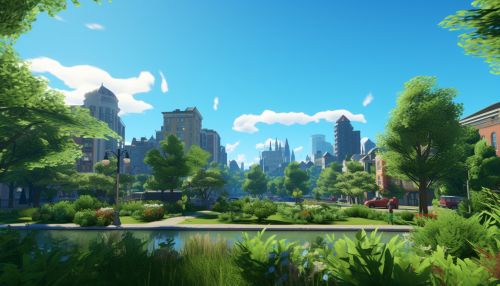Urban Ecology and Biodiversity
Introduction
Urban ecology is the scientific study of the relation of living organisms with each other and their surroundings in the context of an urban environment. The urban environment involves complex, dynamic interactions between humans and their environment, which can be physical (such as buildings or roads) or biological (such as trees or birds). Urban ecology is a recent field that has gained attention as a result of the increasing impact of human activities on the environment and the need to develop sustainable ways of living.


Urban Biodiversity
Urban biodiversity is the variety and abundance of living organisms found in urban areas. This includes all types of life forms, from plants and animals to fungi and bacteria. Urban biodiversity is often underestimated, but it plays a crucial role in maintaining the health and well-being of urban populations. It contributes to air and water purification, noise reduction, climate regulation, and provides opportunities for recreation and education.
Factors Influencing Urban Biodiversity
Several factors influence urban biodiversity, including the size, age, and design of the city, the types of habitats available, and the management of green spaces. The degree of urbanization, which refers to the extent to which natural environments have been replaced by built environments, also plays a significant role. High levels of urbanization often lead to reduced biodiversity, but this is not always the case. Some urban areas, particularly those with a diverse range of habitats, can support a high level of biodiversity.
Urbanization and Its Impact on Biodiversity
Urbanization is a global trend that has significant impacts on biodiversity. As cities expand, natural habitats are often destroyed or fragmented, leading to a loss of species and a reduction in biodiversity. However, urban areas can also provide new habitats for certain species. For example, urban parks and gardens can support a wide range of plant and animal species, and buildings can provide nesting sites for birds such as pigeons and peregrine falcons.
Urban Ecosystems
Urban ecosystems are composed of the physical and biological components of an urban area, including its buildings, roads, parks, and the organisms that inhabit them. These ecosystems are characterized by a high degree of human influence and are often highly modified and disturbed. Despite this, they can support a surprising amount of biodiversity and provide important ecosystem services, such as air and water purification, climate regulation, and recreational opportunities.
The Role of Green Spaces in Urban Biodiversity
Green spaces, such as parks, gardens, and green roofs, play a crucial role in supporting urban biodiversity. They provide habitats for a wide range of species and serve as stepping stones or corridors, allowing species to move through the urban landscape. Green spaces also provide important ecosystem services, including air and water purification, climate regulation, and opportunities for recreation and education.


Challenges and Opportunities for Urban Biodiversity
Urban biodiversity faces several challenges, including habitat loss and fragmentation, pollution, and the introduction of invasive species. However, there are also many opportunities for enhancing biodiversity in urban areas. For example, urban planning and design can incorporate green spaces and other features that support biodiversity. In addition, community involvement in biodiversity conservation can play a crucial role in protecting and enhancing urban biodiversity.
Urban Biodiversity Conservation
Conserving urban biodiversity is crucial for maintaining the health and well-being of urban populations. It requires a combination of strategies, including protecting existing habitats, creating new habitats, and managing green spaces for biodiversity. In addition, educating the public about the importance of biodiversity and involving them in conservation efforts can be highly effective.
Conclusion
Urban ecology and biodiversity are crucial aspects of sustainable urban development. Despite the challenges, urban areas offer many opportunities for biodiversity conservation. By understanding the complex interactions between humans and their environment, we can design and manage our cities in a way that supports a rich diversity of life.
